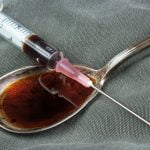The Ultimate Guide to Methadone Maintenance Therapy
As of 2016, there are approximately 948,000 Americans addicted to heroin. If you or someone you love currently uses heroin, you may be considering methadone maintenance therapy.
This type of long-term treatment has been the subject of debate over the years. How can treating an opioid addict with opioids work?
There is more to it than that. A methadone maintenance therapy plan can give addicts a long-term solution to conquering their addiction.
If you’re after more information on methadone maintenance therapy, you’re in the right place. Keep reading for how the treatment began, its goals, and success rate.
The reasoning for Methadone Maintenance Therapy
The history of methadone maintenance therapy is a heroin treatment option born from a study in the 1960s. The study showed that long-term heroin use resulted in the body having a permanent metabolic deficiency.
The way to treat heroin addiction then is to treat the deficiency with opioids. The treating opioid would have a long half-life instead of fasting acting like heroin.
This treating opioid would then release over the next 24 hours. The client then maintains a leveled out status throughout the day.
The treatment of methadone then acts as replacement therapy. The hope is that long-term maintenance therapy reduces the risk of relapse.
Methadone Maintenance Treatment Goals
The goal of a methadone maintenance treatment plan is to reduce drug use, improve quality of life, and reduce crime. The hope is that by reducing withdrawal symptoms, the drive to engage in risky behavior is also reduced.
Decrease Drug Use
By substituting the illicit drug with a medical treatment plan the addiction gets managed in a responsible way. Studies show that total abstinence is not an attainable goal for long-term users.
This treatment addresses that by replacing the opioid in the body. The difference is that the levels are lower and regulated to a certain level.
This reduces the body’s drive to seek out opioids. It also reduces or eliminates withdrawal symptoms. Without withdrawal symptoms, it is easier for the addict to abstain.
Decrease Risk of HIV
HIV gets spread throughout the opioid user’s community. This risk gets greatly reduced as addicts no longer seek out heroin use through needles on the street.
This is due to the decreased rate of sharing needles. It is also due to increased awareness and education on the risks of sharing needles.
Better Physical Health
It is common for illicit drug users to have infectious diseases. As exposure reduces, the illnesses can get cured or managed.
The most common diseases contracted are hepatitis B, C, and D, and HIV. Other nutritional issues can also get addressed. These include problems such as nutrition, dental care, and menstrual complications.
Other injuries can also get addressed that is a cause of being under the influence of illicit substances. These could include accidents such as falling.
Better Mental Health
Without an illicit drug affecting mood and personality, those in treatment can get back to being themselves. Often these users suffer from a range of psychological problems. Without the influence of opiates, they can get their disorder diagnosed and treated.
Decrease Crime
Often criminal activity and illicit drug use go hand in hand. While reduced criminal behavior shouldn’t be a drug treatment goal, it can be a benefit.
Methadone Success Rate
Compared to those users who went untreated, those in treatment had a reduced risk of dying. Those in methadone therapy treatment had a death rate of less than one percent. Whereas, those who left treatment had a death rate of 2.8 percent.
According to a study done in New York, those in MMT were less likely to have HIV from intravenous drug use complications over those who were not in treatment.
Success with a Methadone Maintenance Program
The success of an MMT plan depends on the combination of dose, formulation, distribution, and duration. The most influential being determining the correct dose.
Dose
Most doses range from 50-120 milligrams. This range tends to be more successful at preventing illicit opioid use than lower dosages at 20-40 milligrams.
Doses in the 50-120 range tend to block withdrawal symptoms from stopped use and euphoria from continued illicit use. There is no evidence that higher doses are more successful.
Formulation
The most common methods of formulation are tablets, syrup, or mixed with orange juice. Diversion is a risk with tablets and syrup. Both of these versions can get injected.
Distribution
This creates a risk of diversion. The most common reason for diversion is to supplement an illicit opioid addiction when the illicit drug is not available.
The risk of diversion can be addressed by requiring dosing to be at a pharmacy. Someone in treatment would then visit a clinic daily for treatment.
Duration
Clients who begin a treatment plan can experience the benefits on the first day. This is because the methadone begins to act within the body upon dosing.
It will take the body about three months to adjust and stabilize to the treatment. Those around the client will notice definite changes in behavior and physical appearance.
It can take up to two to three years for the full advantages to take effect. At this point, the greatest behavioral effect will have taken place.
Methadone Maintenance Treatment That Works for You
A methadone maintenance therapy plan takes the approach of addressing the metabolic deficiency. The theory being that long-term illicit opioid use creates a deficiency within the body.
An MMT plan reduces the risk of replacing by using an opioid with a long half-life. This reduces withdrawal symptoms and the euphoria of continued illicit use.
Those who enter an MMT plan have reduced the risk of infectious diseases and STDs. They can experience better physical and mental health.
The key to successful treatment is proper dosing. Clients will experience benefits on day one of treatment, but continued treatment is needed for the benefits of the plan to continue.
For more information contact (855) 976-2092 or check out our blog post on the effects of methadone on the body for more information.
Sources
[1] NIDA. (2018, June 8). Heroin. Retrieved from https://www.drugabuse.gov/publications/research-reports/heroin on 2019, February 14 [2] CRC Health Group. (n.d.). Soldiers, Hippies and Richard Nixon – An American History of Methadone. Retrieved February 14, 2019, from https://www.crchealth.com/addiction/heroin-addiction-treatment/heroin-detox/history_methadone/ [3] FRANCES ROWE GEARING, MORTON D. SCHWEITZER; AN EPIDEMIOLOGIC EVALUATION OF LONG-TERM METHADONE MAINTENANCE TREATMENT FOR HEROIN ADDICTION, American Journal of Epidemiology, Volume 100, Issue 2, 1 August 1974, Pages 101–112, https://doi.org/10.1093/oxfordjournals.aje.a112012 [4] Des Jarlais DC, Friedman SR, Novick DM, et al. HIV-1 Infection Among Intravenous Drug Users in Manhattan, New York City, From 1977 Through 1987. JAMA. 1989;261(7):1008–1012. doi:10.1001/jama.1989.03420070058030 [5] SAMHSA. (2018) Methadone. Retrieved from https://www.samhsa.gov/medication-assisted-treatment/treatment/methadone on 2019, February 14




Leave a Reply
Want to join the discussion?Feel free to contribute!